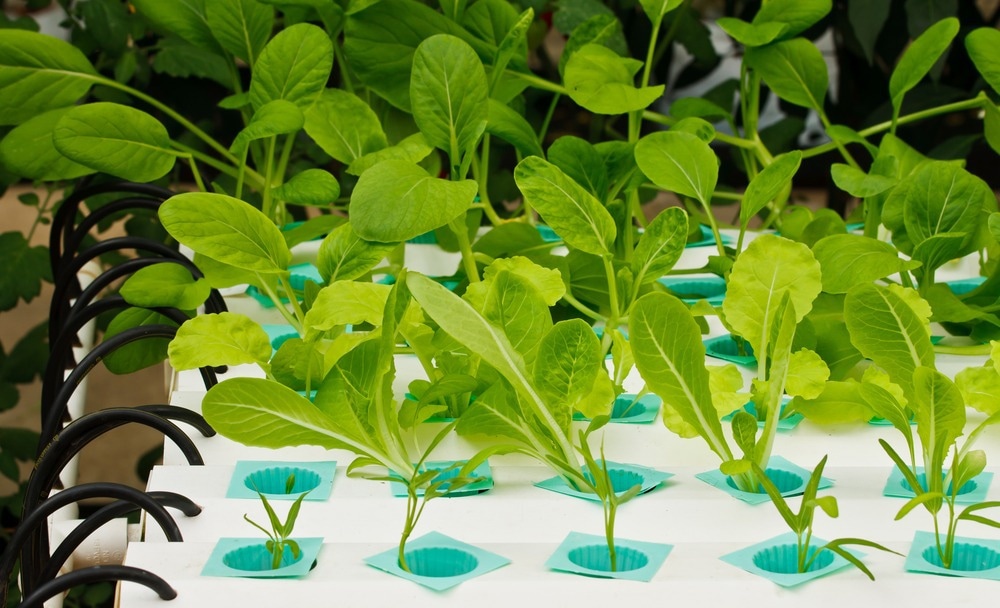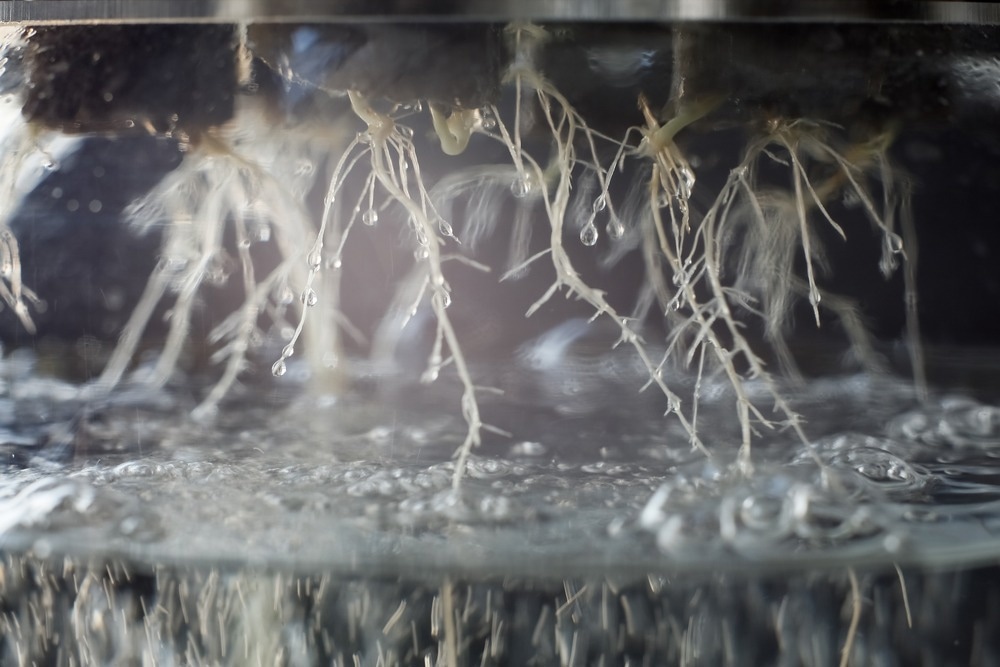Hydroponic methods of farming, such as deep-water farming, provides controlled and less ecologically impactful methods of food production. Despite challenges limiting the spatiotemporal capacity of deep-water systems, the use of emerging technologies as well as growing awareness of environmental issues is contributing to more efficient, cost-effective, practices, eventually ensuring better food security.

Hydroponic farming. Image Credit: Sura Nualpradid. /Shutterstock.com
Defining and Applying Deep-water Farming
The use of alternative agricultural practices has become increasingly common due to the environmental challenges facing traditional strategies. Practices based on monocultures, herbicides, pesticides, and other practices based on external control are being gradually replaced by diverse forms of production including verticulture, hydroponics, and diverse crop systems. This transition focuses on sustainable practices such as recycling nutrients, limiting pesticide usage, and ultimately aims to revise food production.
One such alternative strategy is deep-water cultivation, or deep-water farming, which is a form of hydroponic food production. This strategy suspends plant roots continually in nutrient-rich, highly-oxidized water, allowing the plants to grow in a water-based system. Deep-water farming differs from other hydroponic farming methods as it emphasizes total submersion of roots, which does not occur in ebb and flow, drip, or aeroponic systems.
Deep-water cultivation has gradually increased in popularity over the last century and has been used by recreational producers as well as for commercial purposes. Typically, deep-water cultures grow crops without fruit on a relatively short-term cycle, such as leafy legumes, herbs, and other greens. However, the growing popularity of this strategy has resulted in the emergence of diverse variations of deep-water cultivation catering to different crops.
In commercial systems, deep-water culture is used in the form of floating raft technology to cultivate lettuce, herbs, and small and large leafy greens. Floating rafts are placed in ponds within greenhouses to allow for plant roots to be immersed in nutrient-rich solutions. Outdoor systems are also common, but some form of protection is required to control growing conditions.
Benefits of Deep-water Farming
Deep-water farming provides key benefits in comparison to traditional terrestrial farming as well as other hydroponic systems. It is a unique form of crop production characterized by crop root submersion in large volumes of water, which helps control temperature, pH and nutrient composition, and reduces rapid changes that may harm crop health.
In turn, this allows for nutrients to be recycled and reused, limiting the need for external interference, since nutrient supplies in water last longer and can supply more plants per area with the same concentrations.
Further research has found that plants grown in deep-water cultures have faster growth due to the continuous supply of nutrients and high amounts of oxygen. For instance, a lettuce head requires half the amount of time to grow in deep-water cultures compared to soil (30 days versus 60 days respectively). Improving oxygen availability also confers crops more growth potential since it allows plants to absorb more nutrients, and methods are now attempting to refine oxygen delivery to crops, as seen in a study by Butcher et al. in 2017.
Other benefits of deep-water farming include a reduction in dependence on fertilizers since crops remain submerged for their entire growth cycle. Moreover, deep-water systems are easily deployable, require limited maintenance, and are cost-effective in the short (weeks) and long term (months to years) as there are no additional costs of feeder lines, irrigation, nozzles, and other external inputs required.
Even compared to similar hydroponic systems, crops grown in deep-water farms can be re-spaced throughout their growth period to optimize their need for light, which cannot be done in other hydroponic systems. As a result, seeds and seedlings in deep-water cultures are closer together than later in the life cycle. This demonstrates that deep-water farming may be a reliable, actionable, and cost-effective way of farming among recent innovations in agricultural practices.

Deep-water hydroponic system. Image Credit: Ivan Karpov/Shutterstock.com
Limitations and Future Directions for Deep-water Farming
Despite a wide range of benefits, deep-water systems are limited in terms of spatiotemporal scales due to limitations integral to the system. For instance, air pumps must operate continuously without interruption to provide oxygen for the plants as well as circulate water. This is also the case for temperature, which requires water heaters or coolers to avoid fluctuations that may compromise crop survival. As a result, electrical supply and continuous system operation is essential, which may prove challenging over longer durations or larger scale systems.
On smaller spatial scales, water parameters such as pH, ammonia, and nutritional supply can fluctuate frequently and widely due to minor changes in conditions. This may affect crop growth, health, and resilience. Therefore, continuous monitoring and careful adjustments are necessary for deep-water systems and may be a disadvantage for stakeholders or consumers that lack adequate control, monitoring, or recording systems to manage the operation.
Nonetheless, these issues are being gradually resolved with the emergence of system variants, such as flow-through deep-water systems that allow recirculating water, as well as automated monitoring systems that can readily adjust and maintain the necessary conditions. Indeed, many companies now provide automatic deep-water cultivation systems. In turn, growing awareness and financial investment into hydroponic systems will enable the use of larger, longer lasting, and more sustainable deep-water systems which eventually will generate more sustainable methods of food production to ensure better food security.
Sources:
- Butcher, J. D., Laubscher, C. P., & Coetzee, J. C. (2017). A Study of Oxygenation Techniques and the Chlorophyll Responses of Pelargonium tomentosum Grown in Deep Water Culture Hydroponics. HortScience, 52(7), 952–957. https://doi.org/10.21273/hortsci11707-16
- Danner, R. I., Mankasingh, U., Anamthawat-Jonsson, K., & Thorarinsdottir, R. I. (2019). Designing Aquaponic Production Systems towards Integration into Greenhouse Farming. Water, 11(10), 2123. https://doi.org/10.3390/w11102123
- Deep Water Culture: Is This the Best Hydroponic Farming Method? (2021, April 6). Pinduoduo. https://en.pinduoduo.com/
- Deep Water Culture Systems (DWC) for Hydroponic Growing & Farming. (2022, April 14). Viscon Group. https://viscongroup.eu/expertise/deep-water-culture/
Further Reading
Last Updated: Dec 5, 2022